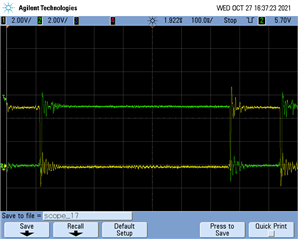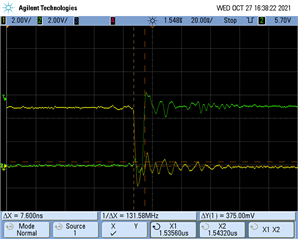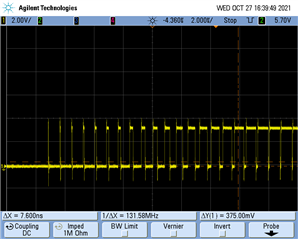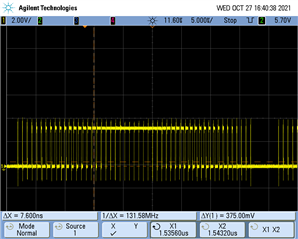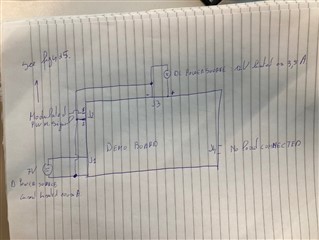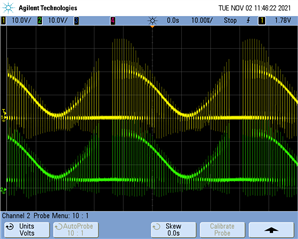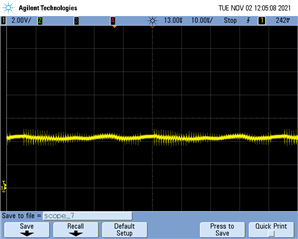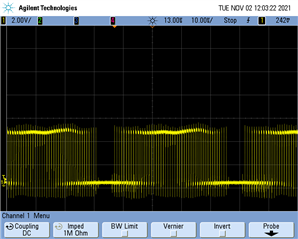Other Parts Discussed in Thread: LMG1205
Hello,
We are trying to amplify a sine wave pwm (generated by a TMS570) using the LMG1205HBEVM evaluation board.
We noticed an abnormally high current with the default EVM board when testing this.
To try and determine the cause we first did a reference test connecting a function generator straight to the EVM board:
- Freq = 1 Mhz with amplitude = 3.3 Volt.
Duty Cycle change from 20 % to 80 %
- Voltage DC-bus = 12 Volt
- No load connected
- Dead-time (8ns) = OK
- RESULT: Signal on testpoint TP12 = OK
- RESULT: 25 mA current out of the 12 Vdc source.
So power consumption is as expected here in this first test.
Then we did a test with the sine wave pwm generated by the TMS570:
- Connection with modulated PWM
- PWM freq = 1 Mhz
- Duty Cycle : pattern to create a sine frequency of 21.2 kHz.
- No load connected
- Dead-time (8ns) = OK
Below are some screenshots of this second test:
Yellow signal = measured on LO (TP11)
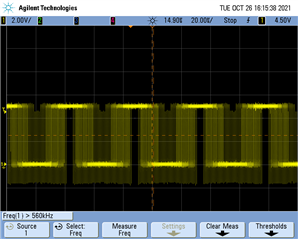
Fig 1: PWM freq = 1 Mhz for building a sine wave
Yellow signal = measured on LO (TP11)
Green signal = measured on HO (TP3)

Fig 2: dead-time between LO-HO (with modulated PWM)
Yellow signal = measured on LO (TP11)
Green signal = measured on HS (TP12)
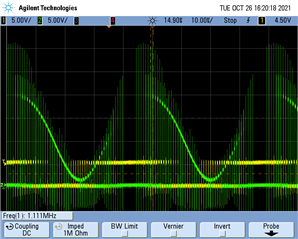
Fig 3: result on output
Questions:
- Here we notice a current > 3.1 A needed for generating a sine starting with a voltage from 12 Vdc. What can be the cause for this high current draw?
- How can we solve this?
- Why is the sine wave interrupted when the Low-side GaN FET gate signal stays a time high?
Any help is appreciated.
Kind regards,
Geert Jacobs



